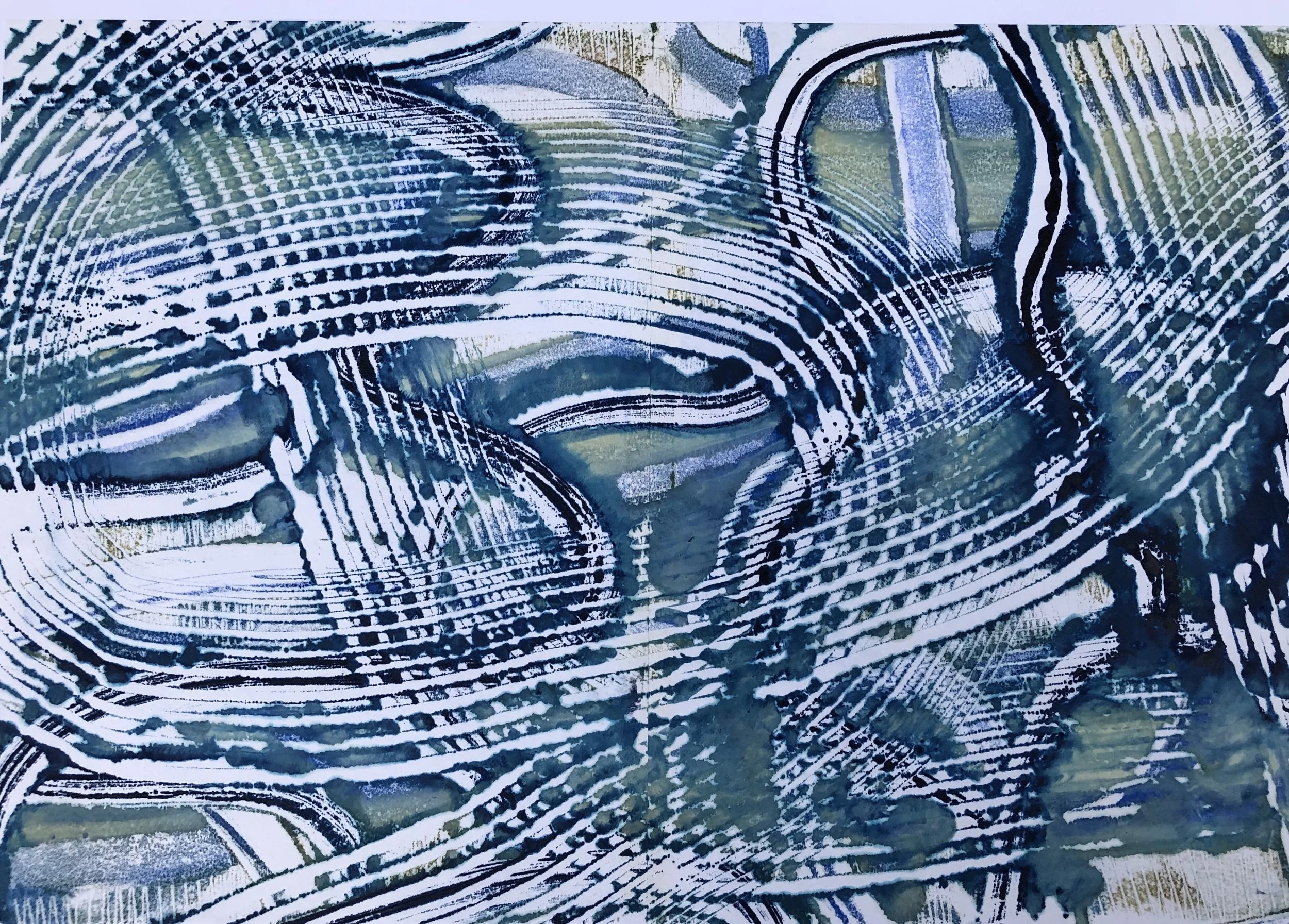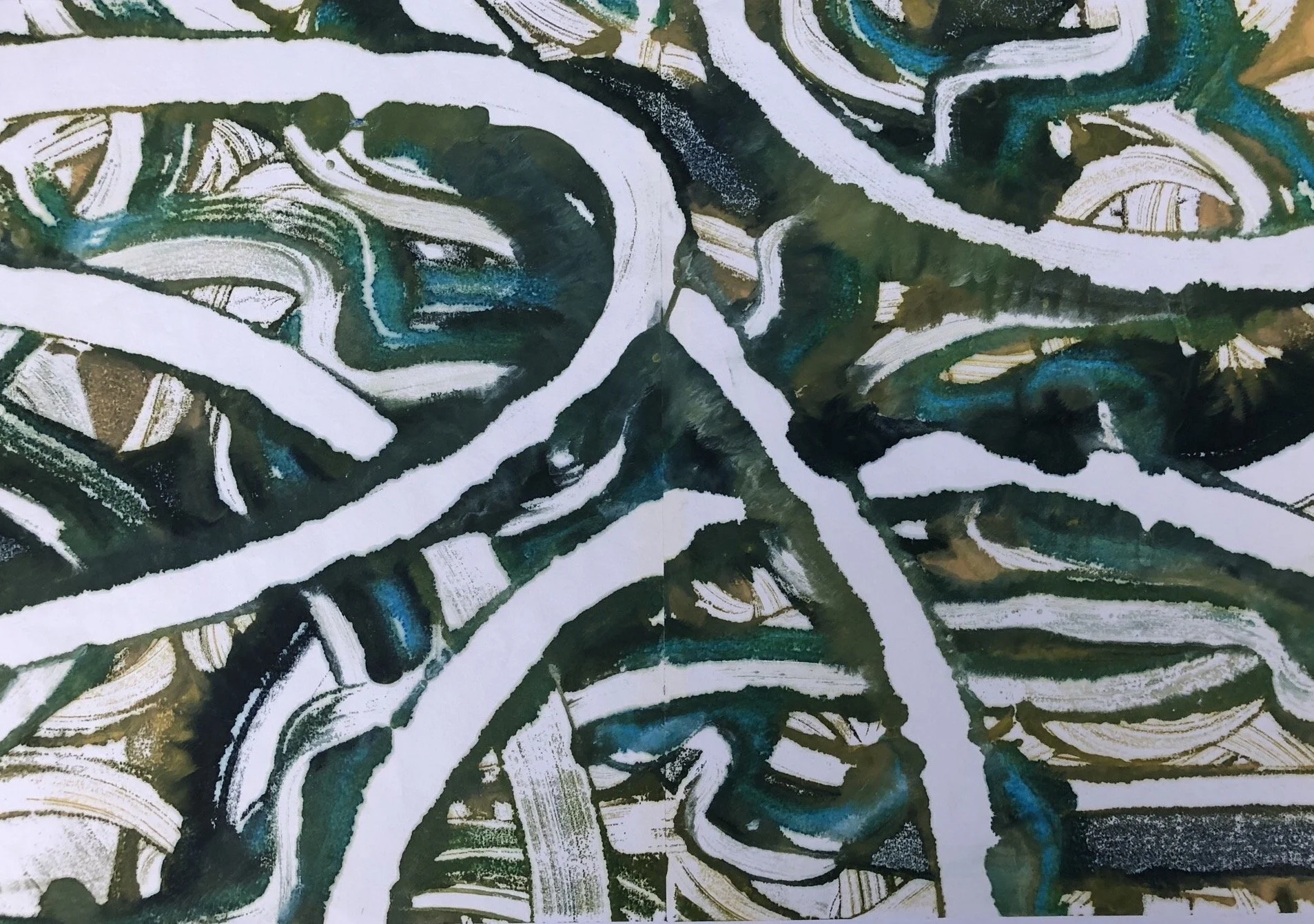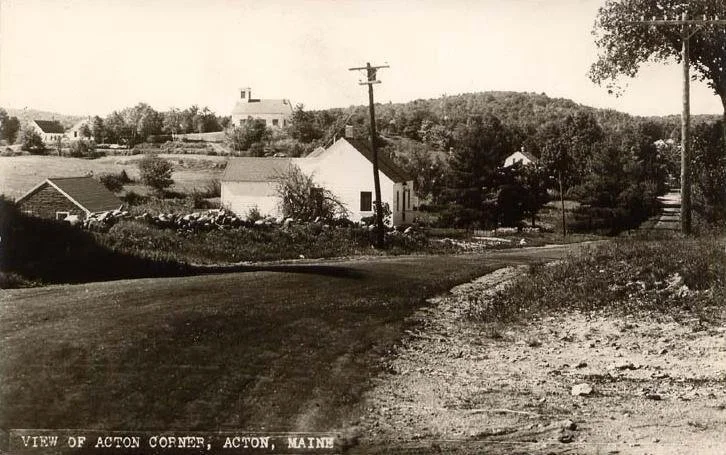
The ripple effect
“Dreamtime-Ripples” (encaustic monotype), by Ken Eason.
Mr. Eason explains in his Web site:
“Several years ago, vacationing in Australia with family, I was introduced to Aboriginal Art and was fascinated by the technique, symbolism and variety. Aboriginal Art is centered on telling the ancient stories of the Aboriginal peoples using symbolism and metaphor. The imagery is described as symbols of the ‘Dreamtime’ that is the Aboriginal understanding of nature and the world.’’
He explores his own “personal ‘Dreamtime’ where I can be physically at home but mentally, spiritually and emotionally away. I use line as symbol of path, thought, or journey. These lines tend to overlap in many layers, each curve signifying a decision point, change in direction or choice.’’
His site says he works “primarily with oil and encaustic media and has been creating such paintings since 1992. Since his first solo show, at the York Street Gallery, Kennebunk, Maine, he has been in numerous group and solo shows from Boston to Bar Harbor, Maine. In 2005, Ken won first prize in painting in the Sculptural Pursuit, ‘Start the New Year with Peace’ Art/Literary Competition and received a several-page color photo spread of his work. Ken participated in the annual International Encaustic Conference from 2009-2012 and has taken several encaustic and professional workshops, but is mostly self taught. In 2017, he started teaching encaustic painting techniques.
“Active in the local arts, Ken is a juried member of the Art Guild of the Kennebunks and New England Wax. He was president of the Sanford Art Association in 2002 -2006. Ken’s work has been collected by the Rochester Museum of Fine Arts, Rochester, N.H.; Rand Direct, Edison, N.J.; and is held in many private collections worldwide. Ken works and lives in Acton, Maine.’’
On the Mousam River near Acton in the early 20th Century. Like many Maine streams, this one had a saw mill.
‘Symbols of the Dreamtime’
“Dreamtime-Rendevous” (encaustic monotype), by Acton, Maine-based artist Ken Eason.
Mr. Eason writes:
“Several years ago, vacationing in Australia with family, I was introduced to Aboriginal Art and was fascinated by the technique, symbolism and variety. Aboriginal Art is centered on telling the ancient stories of the Aboriginal peoples using symbolism and metaphor. The imagery is described as symbols of the ‘Dreamtime,’ which is the Aboriginal understanding of nature and the world.
“This series explores my own personal ‘Dreamtime’ where I can be physically at home but mentally, spiritually and emotionally away. I use line as symbol of path, thought, or journey. These lines tend to overlap in many layers, each curve signifying a decision point, change in direction or choice.’’
— Photo circa 1920
Edited from a Wikipedia entry:
“{Acton, which is west of Portland} was first settled in 1776, by Benjamin Kimens, Clement Steele and John York, all from York, Maine. In 1779, Joseph Parsons built a gristmill on the Salmon Falls River, near Wakefield, N.H. Other mills followed at Acton's various water power sites, including sawmills, gristmills, a hemp mill, a carding mill, a felt mill, a tannery and a shoe factory. In 1877, silver was discovered near Goding Creek. Prospectors dug mines during the 1880s, after which the enterprise declined.’’
It only looks contagious
Work by Kay Hartung — encaustic monotype, encaustic, pastel on panel on wood panel. This artist lives in Acton, Mass.
Acton Town Hall
Among the attractions of Acton, an affluent town northwest of Boston: The Discovery Museums, which are two separate science museums on the same site. The Children's Discovery Museum has exhibits for younger children, while the Science Discovery Museum focuses on older ones. The location is guarded by Bessie, the large dinosaur statue and museum mascot, in the front grounds.
Iron Work Farm: Settlement of South Acton; ‘'Iron Work Farm in Acton, Inc.'‘ is a non-profit, historical corporation that operates two historic houses: Jones Tavern and Faulkner House. Each is open to the public on the last Sunday of the month from May to October. The facilities are also open as part of the local Patriots' Day holiday observance each April (probably cancelled this year).
Hosmer House: This Revolutionary War-era home, owned and maintained by the Acton Historical Society, is typically open to the public on Patriots' Day, on Sept. 27 ('‘Crown Resistance Day’'), as well as on May 27 and June 24, from 2 to 4.
Children’s Discovery Museum, in Acton
— Map by J.R. Burleigh








